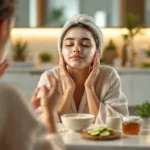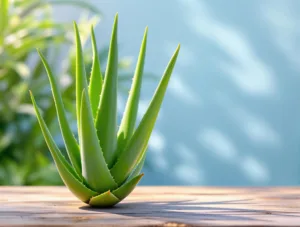Dry Body Brushing: The Ancient Beauty Ritual for Glowing Skin and Detoxification
Introduction
In the pursuit of radiant skin and optimal health, many turn to expensive creams, rigorous diets, or intensive treatments. However, one of the most effective and time-tested beauty rituals requires nothing more than a simple brush—dry body brushing. This centuries-old practice, rooted in Ayurvedic and traditional Chinese medicine, has gained modern acclaim for its ability to exfoliate the skin, stimulate circulation, and promote lymphatic drainage.
Beyond its cosmetic benefits, dry body brushing is a powerful detoxification tool, helping the body eliminate toxins, reduce cellulite, and improve overall vitality. In this comprehensive guide, we’ll explore the origins of dry body brushing, its science-backed benefits, step-by-step techniques, and expert tips to maximize results. Whether you’re a skincare enthusiast or a wellness seeker, this practice could be the missing step in your beauty and self-care routine.
The Origins of Dry Body Brushing
Dry body brushing is not a modern wellness trend but an ancient practice with roots in multiple cultures.
- Ayurveda: In India, dry brushing (known as Garshana) has been used for centuries to stimulate the lymphatic system and balance the body’s energies (doshas).
- Traditional Chinese Medicine (TCM): Similar techniques were employed to promote Qi (energy) flow and remove stagnation in the body.
- Ancient Greece & Rome: The Greeks and Romans used strigils (metal scrapers) to cleanse and exfoliate the skin after bathing.
Today, dry brushing has been revived as a holistic wellness practice, praised by dermatologists and wellness experts alike.
The Science Behind Dry Body Brushing: How It Works
Dry body brushing works through mechanical and physiological mechanisms:
1. Exfoliation
The bristles of the brush remove dead skin cells, unclogging pores and allowing for better absorption of moisturizers. This leads to smoother, softer skin with a natural glow.
2. Lymphatic Stimulation
The lymphatic system, responsible for removing waste and toxins, lacks a pump (unlike the circulatory system, which has the heart). Dry brushing helps manually move lymph fluid toward lymph nodes, enhancing detoxification.
3. Improved Circulation
The gentle friction increases blood flow, delivering oxygen and nutrients to skin cells while promoting collagen production.
4. Cellulite Reduction
While not a cure, dry brushing may temporarily diminish the appearance of cellulite by breaking up fluid deposits and improving skin texture.
Key Benefits of Dry Body Brushing
1. Detoxifies the Body
By supporting lymphatic drainage, dry brushing helps the body expel metabolic waste, reducing bloating and puffiness.
2. Enhances Skin Health
- Reduces ingrown hairs
- Prevents breakouts by clearing pores
- Evens out skin tone
3. Boosts Energy and Immunity
Stimulating circulation can invigorate the body, while lymphatic support strengthens immune function.
4. Reduces Stress
The rhythmic motion of brushing can be meditative, lowering cortisol levels and promoting relaxation.
5. Prepares Skin for Better Product Absorption
Exfoliated skin absorbs serums, oils, and lotions more effectively.
How to Dry Brush Correctly: A Step-by-Step Guide
1. Choose the Right Brush
- Opt for a natural bristle brush with a long handle for hard-to-reach areas.
- Those with sensitive skin should select softer bristles.
2. Brush on Dry Skin Before Showering
- Always brush dry skin to avoid irritation.
- Morning sessions are ideal for an energy boost.
3. Follow Proper Technique
- Direction: Brush toward the heart to follow lymphatic flow.Start at the feet, moving upward in long, sweeping motions.Brush arms from hands toward shoulders.Use circular motions on the abdomen and back (if reachable).
- Pressure: Use firm but gentle strokes—never scrub harshly.
- Duration: Spend 3–5 minutes total, focusing on each area.
4. Shower and Moisturize
- Rinse off dead skin cells with a warm (not hot) shower.
- Apply a nourishing oil or lotion to lock in moisture.
5. Clean Your Brush Regularly
Wash with mild soap and water weekly, allowing it to dry completely.
Common Mistakes to Avoid
❌ Brushing too hard → Can cause micro-tears in the skin.❌ Using on broken or irritated skin → May worsen conditions like eczema.❌ Brushing after showering → Wet skin is more prone to damage.❌ Skipping moisturizer → Hydration is key post-brushing.
Who Should Avoid Dry Body Brushing?
While beneficial for most, dry brushing may not be suitable for:
- Those with extremely sensitive or inflamed skin conditions (psoriasis, severe eczema).
- People with open wounds or infections.
- Individuals with certain circulatory disorders (consult a doctor first).
Complementary Practices for Enhanced Results
To maximize dry brushing benefits, pair it with:✔ Hydration – Drink plenty of water to aid detoxification.✔ Healthy Diet – Reduce processed foods to minimize toxin buildup.✔ Regular Exercise – Boosts circulation and lymphatic movement.✔ Contrast Showers – Alternating hot and cold water can further stimulate circulation.
Final Verdict: Is Dry Body Brushing Worth It?
Dry body brushing is a simple, cost-effective, and scientifically supported practice that offers numerous beauty and health benefits. From glowing skin to improved detoxification, this ritual is a worthy addition to any self-care routine.
Expert Tip:
Consistency is key—incorporate dry brushing 3–4 times per week for optimal results. Over time, you’ll notice softer skin, reduced puffiness, and a revitalized complexion.
Final Thought:
In a world of complex beauty regimens, sometimes the simplest techniques are the most transformative. Give dry body brushing a try—your skin (and lymphatic system) will thank you.
Would you like recommendations for specific brushes or oils to use post-brushing? Let us know in the comments!









Add comment